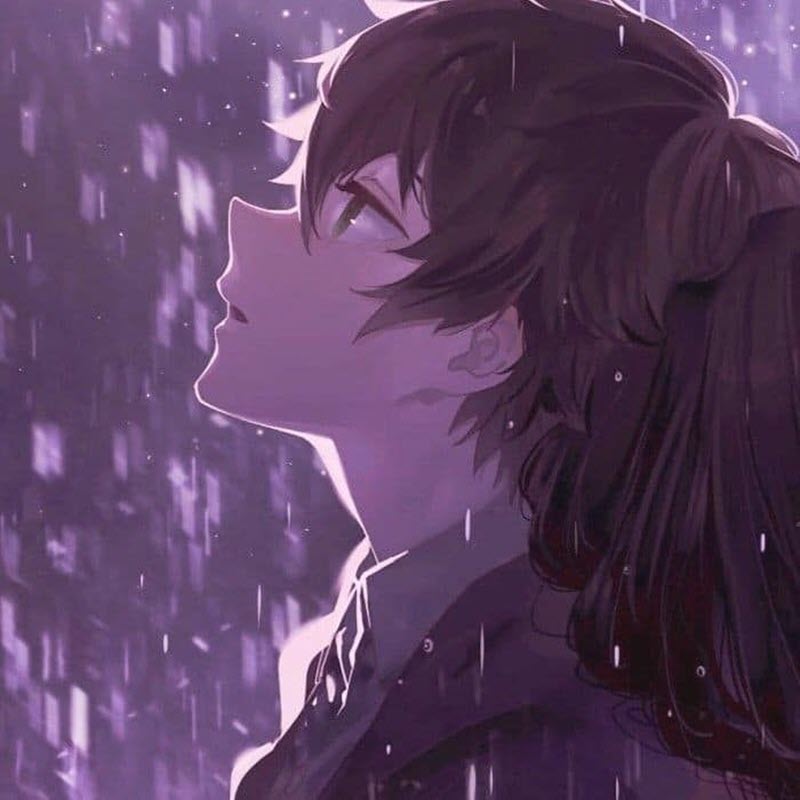Wuthering Waves – Một kiệt tác nghệ thuật khám phá chiều sâu của cảm xúc và bản chất con người.
The Concept of Wuthering Waves in Literature

The phrase “Wuthering Waves” evokes a sense of tumultuousness, reflecting the raw power of nature intertwined with the complexities of human emotions. Just as the waves crash against the shore, so do our feelings clash within us, illustrating the internal struggle that many characters face throughout literature. This section delves into the literary significance of Wuthering Waves, examining how authors use nature as a metaphor for human experiences.
Nature as a Mirror of Human Emotion
Natural elements often serve as mirrors to the emotional states of characters in literature. In the case of “Wuthering Heights,” Emily Brontë eloquently captures the essence of the wild Yorkshire moors to parallel the turbulent relationships between her characters. The fierce winds and raging storms reflect the passionate love and deep-seated hatred experienced by Heathcliff and Catherine.
In other works, such as Shakespeare’s “King Lear,” the tempest serves not only as an atmospheric backdrop but also symbolizes Lear’s inner turmoil and madness. The connection between nature and emotion allows readers to engage more deeply with characters’ motivations and struggles. This intrinsic relationship is what makes the literary concept of Wuthering Waves so profound—it’s the seamless blending of external environment with internal conflict.
Literary Allusions to Waves
The imagery of waves has been utilized in various forms across literature. In poetry, waves often symbolize change, loss, and the passage of time. For instance, in John Keats’ “Ode to a Nightingale,” the speaker reflects on the fleeting nature of life while drawing parallels to the ebb and flow of the ocean. These references not only enrich the text but also evoke emotional responses from the reader. The theme of Wuthering Waves appears again, emphasizing the cyclical nature of existence—one must experience both calm and chaos.
Furthermore, modern writers continue to explore this theme. Authors like Virginia Woolf utilize stream-of-consciousness techniques to depict the complex emotional landscapes of their characters. In “To the Lighthouse,” Woolf’s fluid prose mimics the rhythm of waves, guiding readers through the minds of her characters. By using water symbolism, she underscores the fluidity of memory and perception, which resonates with the idea of Wuthering Waves.
Cultural Interpretations of Waves
Different cultures interpret waves through unique lenses. In Hawaiian culture, for example, waves are seen as sacred entities, embodying the spirit of the ocean and the ancestors. This reverence highlights the interconnectedness of humanity and nature, suggesting that the tides symbolize a deeper understanding of life.
In contrast, European folklore often portrays waves as harbingers of doom or calamity. The legends surrounding sirens, luring sailors to their demise, reflect humanity’s fear of the unknown depths of nature and its unpredictable nature. These cultural interpretations enhance the broader narrative of Wuthering Waves by providing varied perspectives on how humans relate to the forces of nature.
The Role of Personal Experience in Understanding Wuthering Waves
Personal experiences play a critical role in how one perceives and interprets the concept of Wuthering Waves. Each individual has their own emotional landscape shaped by life events, relationships, and environmental influences. Writers draw upon their experiences to create relatable narratives that resonate with audiences on a personal level. This shared understanding fosters a connection between readers and characters, making the exploration of intense emotions more impactful.
In this way, Wuthering Waves becomes not just a literary device, but a universal motif representing the human condition itself. Every person must navigate the storms of their own lives, encountering moments of turbulence and tranquility. As we examine the complexity of emotions depicted in literature, we gain insight into our own experiences, allowing us to embrace the full spectrum of what it means to be human.
The Characters of Wuthering Waves: A Deep Dive

Characters in literature, much like the waves they represent, have layers and complexities that can drive a plot forward or bring it to a standstill. Analyzing characters through the lens of Wuthering Waves can reveal their emotional depth, motivations, and ultimate transformations. In this section, we will explore notable characters, their arcs, and how they exemplify the concept of Wuthering Waves.
Understanding Protagonists and Antagonists
In many stories, protagonists and antagonists embody opposing forces, creating tension that propels the narrative. For example, in “Wuthering Heights,” Heathcliff and Catherine are prime examples of passionate characters whose tumultuous relationship shapes the entire story. Their love is as fierce as the storms that batter the moors, fraught with intensity but ultimately destructive.
Heathcliff’s character represents the darker side of love and obsession, reflecting the chaotic nature of Wuthering Waves. His deep-seated pain and desire for revenge illustrate how unresolved emotions can lead to internal conflict and external chaos. On the other hand, Catherine’s struggle between societal expectations and her true feelings encapsulates the conflict between duty and passion—another manifestation of Wuthering Waves.
Supporting Characters: The Ripple Effect
While protagonists and antagonists often take center stage, supporting characters play an equally vital role in exploring the themes of Wuthering Waves. Take Nelly Dean, the narrator of “Wuthering Heights.” Her insights provide a unique perspective on the events unfolding, revealing the ripple effect that the main characters’ actions have on those around them.
Likewise, characters like Edgar Linton and Isabella Linton illustrate how the chaotic emotions of Heathcliff and Catherine impact their lives. Both suffer the consequences of being entangled in a web of passion and vengeance, showcasing how Wuthering Waves can extend beyond just the primary characters. Their experiences highlight the far-reaching implications of emotional upheaval on relationships, underscoring the interconnectedness of individuals within a narrative.
Character Development and Transformation
As characters navigate the turbulent waters of their emotions, their journeys often lead to profound transformations. In “Wuthering Heights,” we see how Heathcliff’s obsession ultimately consumes him, leading to a tragic end. His transformation from a passionate lover to a vengeful figure embodies the darker aspects of Wuthering Waves—the potential for self-destruction when one is swept away by overwhelming emotions.
Conversely, characters like Cathy Linton exhibit growth as they learn to navigate their feelings. Through hardship and heartache, they find resilience, learning how to channel their emotions positively. This development emphasizes the importance of embracing the complexities of human nature and understanding that even amidst chaos, there is room for growth and healing.
The Impact of Relationships on Characterization
Relationships act as catalysts for character development, often exacerbating emotional turmoil or fostering healing. In “Wuthering Heights,” romantic entanglements serve as a microcosm of larger societal issues—love triangles, class conflicts, and familial obligations all intertwine to create a rich tapestry of conflict.
For instance, the relationship between Heathcliff and Catherine serves as a focal point for understanding the consequences of unfulfilled desires. Their love, though passionate, is marred by jealousy, betrayal, and societal constraints. Meanwhile, the contrasting relationship between Edgar and Catherine presents an alternative path, illustrating the complexities of compatibility versus passion.
By examining these dynamics through the lens of Wuthering Waves, readers can appreciate the intricacies of human interaction and the emotional undercurrents that shape character trajectories. Relationships become a powerful vehicle for exploring the depths of human emotion, revealing how love, loyalty, and rivalry can create waves of impact within a narrative.
The Symbolism of Wuthering Waves

Symbolism plays an essential role in literature, adding layers of meaning that invite readers to explore deeper interpretations. The concept of Wuthering Waves can be analyzed through various symbols present in texts, each contributing to the overarching themes of emotion and human nature.
Nature as a Symbolic Landscape
The setting in “Wuthering Heights” is synonymous with the tumultuous emotions of the characters. The Yorkshire moors are not merely a backdrop; they symbolize the wild, untamed spirit of the characters who inhabit them. The constant shifts in weather mirror the characters’ inner struggles, reinforcing the notion that nature itself serves as a living, breathing entity intertwined with their fates.
Moreover, storms and calm days alike signify the highs and lows of their relationships. When Heathcliff returns to Wuthering Heights after years away, the stormy weather signifies the chaos he brings back into the lives of those connected to him. This interplay between nature and emotion invites readers to consider how external environments influence internal states.
Water as a Metaphor for Emotion
Water, often associated with purity and renewal, can also symbolize the chaos of emotions—think of the crashing waves or tranquil lakes. In literature, the presence of water often signifies change, cleansing, and rebirth, paralleling the journey of characters as they navigate their emotional landscapes.
In “The Great Gatsby,” F. Scott Fitzgerald utilizes the imagery of water to emphasize the fleeting nature of dreams and aspirations. The green light across the bay serves as a symbol of Gatsby’s unattainable desire, evoking both hope and despair—a classic example of Wuthering Waves in action. The oscillation between ambition and failure mirrors the rise and fall of ocean waves, underscoring the fragility of human endeavors.
The Influence of Dreams and Aspirations
Dreams, both literal and metaphorical, play an instrumental role in shaping the course of characters’ lives. They reflect internal desires and fears, pushing characters toward new beginnings or urging them to confront their past. In “Wuthering Heights,” the haunting dreams of Catherine serve as a poignant reminder of unresolved feelings and the lingering impact of love lost.
The duality of dreams—representing both hope and disillusionment—serves as a powerful narrative thread. This theme resonates within the context of Wuthering Waves, as it illustrates the push and pull between aspiration and reality. Characters grapple with the weight of their dreams, often finding themselves caught in the turmoil of pursuing what seems just out of reach.
The Cycle of Life and Death
The cyclical nature of waves echoes the themes of life and death prevalent in literature. Characters often face pivotal moments that force them to reckon with mortality, whether through loss, sacrifice, or confrontation with their own flaws. In “Wuthering Heights,” the deaths of Catherine and Heathcliff serve as significant turning points, impacting the next generation and perpetuating the cycle of tragedy.
Through this lens, Wuthering Waves encapsulates the essence of human existence—the inevitability of birth, growth, decay, and rebirth. The ebb and flow of life create a rhythm that resonates through generations, highlighting the interconnectedness of our choices and their consequences.
The Emotional Resonance of Wuthering Waves

At its core, the concept of Wuthering Waves explores the emotional resonance of literature, allowing readers to delve into the complexities of human experiences. The ability of stories to evoke strong feelings stems from their portrayal of relatable struggles, triumphs, and vulnerabilities. In this section, we will examine how Wuthering Waves captures the essence of emotional storytelling.
Empathy through Relatable Experiences
One of the most compelling aspects of literature is its capacity to foster empathy. Readers find solace in characters who reflect their struggles, joys, and fears. The depiction of Wuthering Waves allows readers to connect with characters on a profound level, as they witness their emotional battles unfold before them.
In “Wuthering Heights,” Catherine’s longing for freedom and Heathcliff’s relentless pursuit of love resonate with many individuals. These relatable experiences elicit empathy, inviting readers to reflect on their own lives and relationships. The emotional depth embedded in the narrative encourages readers to confront their vulnerabilities, forging a bond between the characters and the audience.
The Power of Catharsis in Storytelling
The cathartic experience of engaging with literature allows individuals to process their emotions and experiences vicariously. Through the triumphs and tribulations of characters navigating Wuthering Waves, readers may find resolution or comfort in their own lives. This phenomenon underscores the therapeutic nature of storytelling—a space where individuals can confront their feelings safely.
Classic tragedies like “Wuthering Heights” provide an opportunity for readers to witness characters grappling with heartbreak, loss, and regret. The unfolding drama encourages reflection on personal experiences, offering a pathway to release pent-up emotions and promoting healing.
Emotional Complexity and Moral Ambiguity
Wuthering Waves embodies the emotional complexity inherent in human relationships, challenging readers to grapple with moral ambiguity. Characters are rarely entirely good or evil; instead, they exist within a spectrum of motivations, desires, and flaws. This complexity mirrors real-life situations, where motivations can be multifaceted and difficult to discern.
In “Wuthering Heights,” Heathcliff’s actions often blur the lines between love and vengeance. While his pain is palpable, the consequences of his choices raise questions about morality and redemption. By navigating these gray areas, readers are encouraged to confront their biases and assumptions, leading to a deeper understanding of the human psyche.
The Lasting Legacy of Emotional Narratives
Stories resonating with Wuthering Waves leave an indelible mark on culture and society. The emotional depth explored through literature fosters connections across generations, ensuring that shared experiences transcend time and space. Classic works like “Wuthering Heights” remain relevant, inspiring adaptations and interpretations that continue to spark conversation about love, loss, and the complexities of human nature.
As readers engage with these emotional narratives, they contribute to a collective understanding of the human experience—an acknowledgment that we are not alone in our struggles. The legacy of Wuthering Waves serves as a testament to the enduring power of literature to evoke emotion, inspire introspection, and cultivate empathy.
Kết luận

Wuthering Waves là một khái niệm sâu sắc trong văn học, khám phá những chiều sâu của cảm xúc và bản chất con người. Qua các nhân vật phức tạp, hình tượng tự nhiên và các mối quan hệ, chúng ta thấy được sự kết nối giữa con người với nhau và với thế giới xung quanh. Những cơn sóng của cảm xúc không chỉ định hình câu chuyện mà còn phản ánh những trải nghiệm cá nhân của mỗi người.
Sự phong phú của chủ đề Wuthering Waves mở ra những cơ hội cho việc hiểu biết sâu sắc hơn về chính mình và những người khác. Văn học không chỉ là một phương tiện giải trí mà còn là một cuộc hành trình khám phá bản thân, nơi mà chúng ta có thể đối mặt với sự hỗn loạn của cảm xúc và tìm thấy sự chữa lành. Chúng ta hãy tiếp tục khám phá những tác phẩm văn học, để từ đó nhận thức rõ hơn về bản thân và thế giới.


.png)











